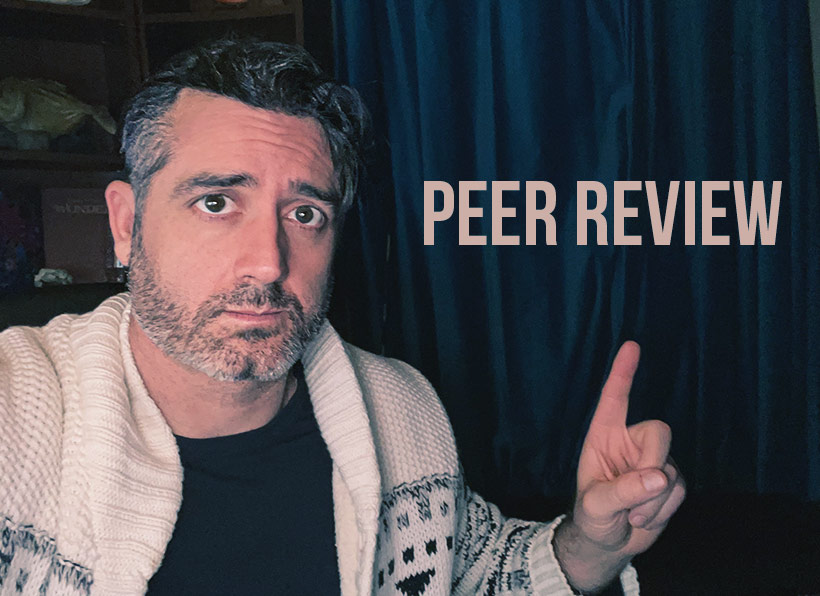Everything You Need to Know About Peer Reviews
Peer review is when experts in a particular field examine the ideas or research work authored by another person in the area. The purpose of this process is to refine the author’s work by filtering out unnecessary information. Experts check on the validity, originality, and relevance of the study’s contents for quality assurance. This ensures the content published is of high value and has limited or no errors. The experts also give suggestions to writers on ways to increase the standards of their manuscripts.

Background
Peer reviewing started in the ancient Greek period and was documented by Ishaq bin. In a book, he advised that medical practitioners take notes recounting every session. The medical authority then analyzed the notes to check if the practitioners followed the set guidelines. If he did not adhere to the standards, a lawsuit followed. Later on, in 1655, the Royal Society’s Philosophical Transactions became the first journal to make the peer review process official. Peer review has received a lot of criticism, but most researchers believe it is the leading scientific evaluation method. A 2015 research study showed that eighty-two percent of researchers concur that the lack of peer review limits scientific communication control.
Types of Critiques
There are different methods of critiquing ideas, with varying benefits and problem areas. Currently, more people are pushing for more transparency in the review process. Journals provide information on their preferred method through their homepage. Here are the types of peer review methods:
Single-blind peer review. One way of peer reviewing is the single-blind review method. The author does not have access to the names of the reviewers. It is the oldest and most common method. One disadvantage of this method is that reviewers may be excessively harsh on an author’s work. Also, there are concerns that some reviewers may delay an author’s work with malicious intent.
Double-blind peer review. In this model, both parties are unaware of each other’s identity. The chances of bias are less since the reviewers do not have access to the attributes of the author. They do not know their gender, their publication history, their academic history, or any other information that may shadow their opinions. For established writers, it may be challenging to apply this method. This is because the reviewers may notice tendencies like the author’s writing style that identify them. Therefore, it is challenging to assure a writer of total anonymity.
Triple-blind peer review. In the triple-blind method, the editors, author, and reviewers are all anonymous. This method is complex to implement as it requires anonymity right from the pre-submission stage.
How It Starts
Review commences when scientists complete research. They write a manuscript that shows the study’s purpose, the experimental procedure, the findings, and the study’s conclusions. After that, the author finds a journal that deals with a related research field and submits their manuscript. This is the pre-submission stage. The journal’s editors review the document to ensure it aligns with the journal’s field and quality requirements. A lot of manuscripts do not pass this stage. If it passes, the paper moves on to the peer reviewers or the referees. Editors select what documents pass for reviewing and also ensure the peers review the documents fairly and within the schedule.
After a Review
As stated, reviewers are like the quality assurance agency of research; they make sure the paper contributes to the advancement of the relevant sector and that the methods used are authentic. After making their recommendations, referees hand over the paper to the editor, who facilitates communication between the writer and the critics. This process is similar to when a college professor hands out essays with his remarks to give students a chance to correct them. It’s like when you order an essay, and it goes through various processes before the final draft. Editors clarify suggestions by the reviewers and may overrule some of them. Once there is an agreement, the paper moves to the production stage. Here, the editors edit and format it, and the paper is ready for publishing.

Who Are the Reviewers?
Those who participate in peer reviews need to know the particular subject. They must have a technical understanding of the journal’s topics. Without that, they will not understand the ideas you communicate in your journal. Thus, they cannot review your work. Age does not matter, but young reviewers tend to give faster and better-quality responses. In a year, reviewers conduct about eight reviews. To provide a broader perspective, journals include referees with different backgrounds and stands in the peer review team. They also invest in a large pool of reviewers to prevent burnout and time constraints.
Reviews are an essential aspect of any credible research. Currently, more people are lobbying for transparency, thus the open review procedure. This is where there is full transparency, and all parties know one another. This has led to faster and less biased reviews. However, reviewers may limit their opinions to avoid retribution. Therefore, the search for the best method continues.
































































































